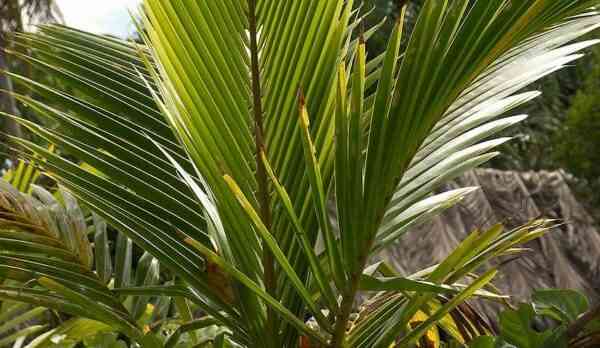The organs of trees and plants, like leaves, are indispensable for the functioning of these organisms. True, some of them are exposed for the winter, shedding foliage, but this is due to harsh climatic conditions. At the same time, it is impossible to find the same leaves even on the same plant. Although they look the same, they are almost as unique as snowflakes.
Interesting facts about leaves
- Needles on Christmas trees, pines and other similar trees are also foliage, just such an original form.
- In New Guinea, the putang plant grows, the edges of the leaves of which are so sharp that the locals use them as razor blades.
- In India and Sri Lanka, banana leaves are often used as disposable tableware, free and environmentally friendly (interesting facts about Sri Lanka).
- The thinnest leaves among all plants went to the maidenhair fern. They are only one layer of cells thick and can be damaged by even the slightest touch.
- Among all plants, the record for the number of leaves on one tree is cypress. It can have up to 50 million of them! For comparison, an oak has about a quarter of a million, that is, 200 times less.
- Each leaf is riddled with many veins that perform the same function as the vessels in the body of a mammal. Only they are filled not with blood, but with water.
- Scientists still do not know how many leaf shapes are possible in the world.
- The velvichia plant throughout its life span does not part in its two leaves. If you cut them off, it will die. Welwitschia lives up to 100 years.
- The leaves of some plants and trees can turn towards sunlight to absorb its energy. Or, on the contrary, turn to it with an edge to reduce the evaporation of valuable moisture – it depends on the plant and the conditions in which it grows.
- The tendrils of leguminous plants like beans and peas are also leaves.
- The leaves of the bilimbi tree drop down in winter when it is dormant. And they also respond to touch, and quickly. These amazing plants grow in India (interesting facts about India).
- The shy mimosa got its name because at the slightest touch its leaves move and fold down.
- Term the life of needles, which are also leaves, in common spruce is on average 6 to 12 years.
- The longest leaves went to the raffia palm. They can reach a length of 25 meters.
- In some plants, the young leaves may be red or purple, but then they turn green when they grow and increase the production of chlorophyll.
- Chilean Boquila Plant – a master of imitation. Its leaves are disguised as leaves of a tree or shrub, along which its climbing shoots crawl up, and leaves of different shapes and even different colors can grow on one shoot. Scientists still don’t know why the goblet is so mimicry.
- Some cacti have leaves in addition to needles. They are located at the very bottom of the plant, and you can only see them with a microscope (interesting facts about cacti).
- Giant water lilies are found on the Amazon River. They can withstand weight up to 40-50 kilograms. But it is not recommended to put your foot on such a sheet – if the load falls on a single point, the sheet will immediately break through. A diameter of 2 meters makes them the largest leaves in the world. This plant is even depicted on the coat of arms of the South American country of Guyana.
